Effect of cognitive behavioral therapy on anxiety and depression of infertile women:A meta-analysis
2019-11-20HosseinMashhadiAbdolahiMortezaGhojazadehSalmanAbdiMahdiehAbbasalizadFarhangiZeinabNikniazLeilaNikniaz
Hossein Mashhadi Abdolahi, Morteza Ghojazadeh, Salman Abdi, Mahdieh Abbasalizad Farhangi, Zeinab Nikniaz,Leila Nikniaz✉
1Tabriz Health Services Management Research Center, Tabriz University of Medical Sciences, Tabriz, Iran
2Research Center for Evidence-Based Medicine, Tabriz University of Medical Sciences, Tabriz, Iran
3Clinical Psychiatry Research Center, Tabriz University of Medical Sciences, Tabriz, Iran
4Drug Applied Research Center, Tabriz University of Medical Sciences, Tabriz, Iran
5Liver and Gastrointestinal Diseases Research Center, Tabriz University of Medical Sciences, Tabriz, Iran
Keywords:Cognitive behavioral therapy Anxiety Depression Infertile women Meta-analysis
ABSTRACT Objective: To investigate the effect of cognitive behavioral therapy on anxiety and depression in infertile women.Methods: This study was performed in 2019 by searching Google Scholar, Scopus, PubMed/MEDLINE, Cochrane library, EMBASE, Proquest, ISI Web of Science, MagIran, SID and IranMedex. Eligible studies were selected by two reviewers and outcomes of interest were extracted. The meta-analysis was performed using the random effect models.Ⅰ- square statistic test was used for heterogeneity analysis. Presence of publication bias was also checked.Results: Eleven studies were included in this review. Between-group differences (cognitive behavioral therapy and control groups) in risk ratio for infertile women’s depression was d=-1.36; 95% CI=-1.81, -0.90; P<0.001. For infertile women’s anxiety, between-group differences in risk ratio was d= -0.83; 95% CI= -1.18, -0.47; P<0.001.Conclusions: Cognitive behavioral therapy is effective in the reduction of depression and anxiety in patients with or without in vitro fertilization/intracytoplasmic sperm injection treatment.However, the lack of high-quality studies makes it challenging to make a solid and precise conclusion. Well-designed studies should be undertaken in the future to confirm these results.
1. Introduction
Infertility is defined as the failure to achieve a clinical pregnancy after 1 year or more of unprotected intercourse[1]. The prevalence of infertility is 5% to 10% among couples worldwide[2]. Most couples are able to cope with infertility, but others present challenging emotional reactions such as depression, anxiety, frustration,interpersonal problems, feelings of inferiority, suppressed anger,and unconscious feelings of guilt[3-5]. Some studies showed a relationship between depression and infertility, but it has remained a controversial issue[6,7]. Due to the high prevalence of emotional conditions in infertile women, both early detection and treatment of these disorders are very important[8]. Behavioral therapy is a worthy way to help infertile women for adapting with the emotional problem[9]. Based on the results of a study conducted by Terzioglu,lower anxiety and depression scores were observed by supporting infertility treatment[10]. Other studies showed that leaning confronting methods by infertile women increases psychological health and reduces hopelessness[11-13]. In addition, studies showed that the number of treatment cycles for being pregnant could be reduced by proposing psychological interventions in advance of fertilization treatments[14].
Cognitive-behavioral treatment (CBT) is a psychotherapeutic method based upon a combination of basic behavioral and cognitive research. This treatment has led to positive consequences by improving coping capacities and reducing catastrophic thinking about pain[15]. It is believed that CBT is an effective treatment for different mental problems; however, in the field of infertility, few studies have assessed the success of this type of psychosocial intervention. There is only one systematic review and one meta-analysis reviewed the efficacy of different psychological interventions in infertile couples and the results showed that different types of psychological treatments had no effect on mental health in this population[13,16]. Based on the recommendation of the above studies, research should especially focuse on specific types of psychological interventions and specific target population. Therefore, this meta-analysis aimed to evaluate the effect of CBT on anxiety and depression of infertile women.
2. Materials and methods
2.1. Data sources
Published studies until April 2019 were collected for a systematic review of cognitive behavioral therapy on anxiety and depression of infertile women by searching PubMed/MEDLINE, Scopus,EMBASE, Cochrane Library, ISI Web of Science, Proquest and Google scholar. In addition, Iranian databases including Scientific Information Database, Iranian Research Institute for Information Science and Technology, Magiran, IranMedex and Barakat knowledge network system were searched. Keywords were selected based on medical subject heading terms and included (but not limited to): “anxiety OR depression OR mental health OR stress OR psychological health OR quality of life AND infertile women OR infertile female OR infertile couple OR infertile patient AND cognitive behavioral therapy OR cognitive behavioural therapy OR cognitive-behavioral treatment OR CBT”. Also, the Persian equivalence of these key words was searched. The references of recent reviews and other eligible articles were manually searched for additional studies not identified by the electronic search.
2.2. Criteria
2.2.1. Types of studies
Randomized clinical trials or quasi-experimental studies in English or Persian language had surveyed CBT effectiveness. Studies were excluded if performed on samples other than infertile women,other languages rather than Persian and English, articles with poor quality, all articles related to the organizations’ reports, letters to the editor, abstracts presented at conferences, review articles, thesis or suggestions and article by using invalidated questionnaires.
2.2.2. Interventions
The intervention group was restricted to CBT and the control group did not receive CBT.
2.2.3. Outcome
Anxiety and depression of infertile women were reported separately for the CBT group and the control group through the most widely used and validated instruments in psychology as follow:general health questionnaire, Beck depression inventory, Hamilton depression rating scale, depression anxiety stress scales, state-trait anxiety inventory, and Cattell anxiety scale.
The results of included studies should be reported by P-value,t-value or F-value and the sample size of the study population should accurately represent the average effect size of 0.50 with a power of 0.80.
2.3. Data extraction and quality assessment
Two independent reviewers screened all titles and abstracts of the retrieved papers to decide on their inclusion. In addition, full articles of the potentially relevant studies were retrieved and independently screened for eligibility by two reviewers. Disagreements were resolved through discussion, and the reasons for exclusion were recorded for each of the excluded full-text articles. Two researchers also conducted data extraction independently, with disagreements being resolved through discussion.
The following information was subtracted from the studies: the first author, publishing year, sample size, duration of infertility, duration of intervention, dwelling, intervention, and anxiety and depression measurement before and after the intervention. For quality assessment of included trials, Cochrane Collaboration’s tool was applied and selection bias, performance bias, attrition bias, reporting bias, and other bias were examined. Any discrepancies were resolved through discussion and by consulting a third reviewer.
2.4. Quantitative synthesis
All analyses were carried out by using the Comprehensive Meta-Analysis version 2.0. The mean changes of depression and anxiety in both CBT and control groups before and after the study were extracted and if it was not reported, the value was calculated based on the t-value between and within groups, the F-value or P-value.The mean difference between the treatment and control groups was selected to represent the difference in continuous outcomes [with 95% confidential interval (CI)].
2.5. Statistical analysis
Heterogeneity was determined by using the Q statistic and I2. A significance level of P=0.05 for Cochran’s Q test or I2>50% was considered as statistically important heterogeneity[17]. Funnel plot and adjusted rank correlation test (methods of Begg and Mazumdar and Eggers) were applied for assessing publication bias.
2.6. Subgroup analysis
We performed a subgroup analysis considering the type of medical treatment. The subgroups were defined as getting assisted reproductive treatment or not (assisted reproductive technology:in vitro fertilization (IVF)/intracytoplasmic sperm injection (ICSI)versus no IVF/ICSI).
3. Results
3.1. Selection of eligible studies and study characteristics
The search strategy resulted in 269 titles, which were reduced to 168 following the deletion of duplicates by using the Endnote 7.2.1 literature manager software. Initial assessment of the titles and abstracts reduced the number of papers to 24 (unrelated papers, other study types =144) and further reduced to 11 on the closer assessment of the full text based on the inclusion and exclusion criteria.In this systematic review, 3 studies due to the use of unknown questionnaires, 1 study due to the lack of pre-test, 5 studies due to the lack of mean and standard deviation report, 2 studies due to the poor credit and lack of mean and standard deviation report, 1 study which was published both in Persian and English, and one study due to lack of suitable interpretation of the questionnaire were excluded.Finally, 11 studies were included in this meta-analysis. A flow chart of literature retrieval is presented in Figure 1.
In the eligibile studies, the participants were infertile women who participated in CBT session for handling depression or anxiety.Questionnaires were completed for all patients before and after study. The basic characteristics of the included studies and the mean scores of depression and anxiety were summarized in Table 1. As for publishing year, the included studies were published from 2002 to 2015. And the treatment duration in all studies was 12-24 h.Quality assessment of the included studies was presented in Table 2. All studies had one or more domains characterized as high risk of bias. No study enjoyed a better quality in terms of having more low-risk domains than high-risk ones out of 7 domains. So, all of the included studies were of low quality. Low quality studies were rated as high risk in relation to selection bias, due to a non-random selection of participants, performance and detection bias.
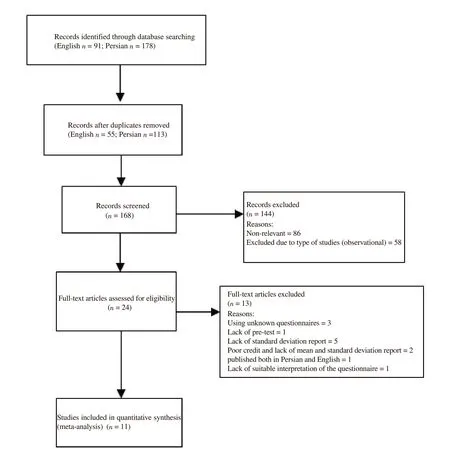
Figure 1. Flow diagram for selection of articles.
3.2. Participant characteristics
Of the included studies, 10 were conducted in Iran and one in Portugal. In the selected studies, 527 infertile women were enrolled.Among them, 256 and 271 participants were in the CBT group and control group, respectively. All cognitive-behavioral interventions were applied as group psychotherapy (Table 1).
3.3. Meta-analysis results
In most of the eligible studies, several questionnaires were used to measure anxiety and depression. Therefore, each questionnaire was entered as a separate study to meta-analysis. Accordingly, 20 studies(questionnaires) were analyzed.
3.3.1. Depression
Heterogeneity was determined by using the Q statistic and I2which was not significant (Q=38.02, P<0.001, I2=76.33). So, the random effect model was used. The forest plot was shown in Figure 2. As shown in Figure 2, the between-group differences (CBT and control groups) in risk ratio for infertile women’s depression were significant(d=-1.36; 95% CI=-1.81, -0.90; P<0.001).
As shown in Figure 3, regarding depression, in both study groups where patients did (d=-1.39; 95% CI=-0.19, -2.25; P=0.002) or did not (d=-1.35; 95% CI=-1.91, -0.79; P<0.001) receive IVF/ICSI treatment, CBT resulted in a significant decrease in depression.
3.3.2. Anxiety
According to the identification of statistical heterogeneity(Q=42.86, P<0.001, I2=79.00), the random effect model was used.The forest plot is shown in Figure 4. As shown in Figure 4, the between-group differences (CBT and control groups) in risk ratio for infertile women’s anxiety were significant (d= -0.83; 95% CI= -1.18,-0.47; P<0.001).
As shown in Figure 5, regarding anxiety, in both study groups where patients did (d= -0.84; 95% CI=-1.32, -0.35; P=0.001) or did not (d=-0.82; 95% CI=-1.41, -0.22; P=0.007) receive IVF/ICSI treatment, CBT resulted in a significant decrease in anxiety.
3.3.3. Publication bias
Results of the funnel plot and Egger test showed no possibility of publication bias (depression: t=1.6, P=0.14, anxiety: t=0.8, P=0.40)(Figure 6).
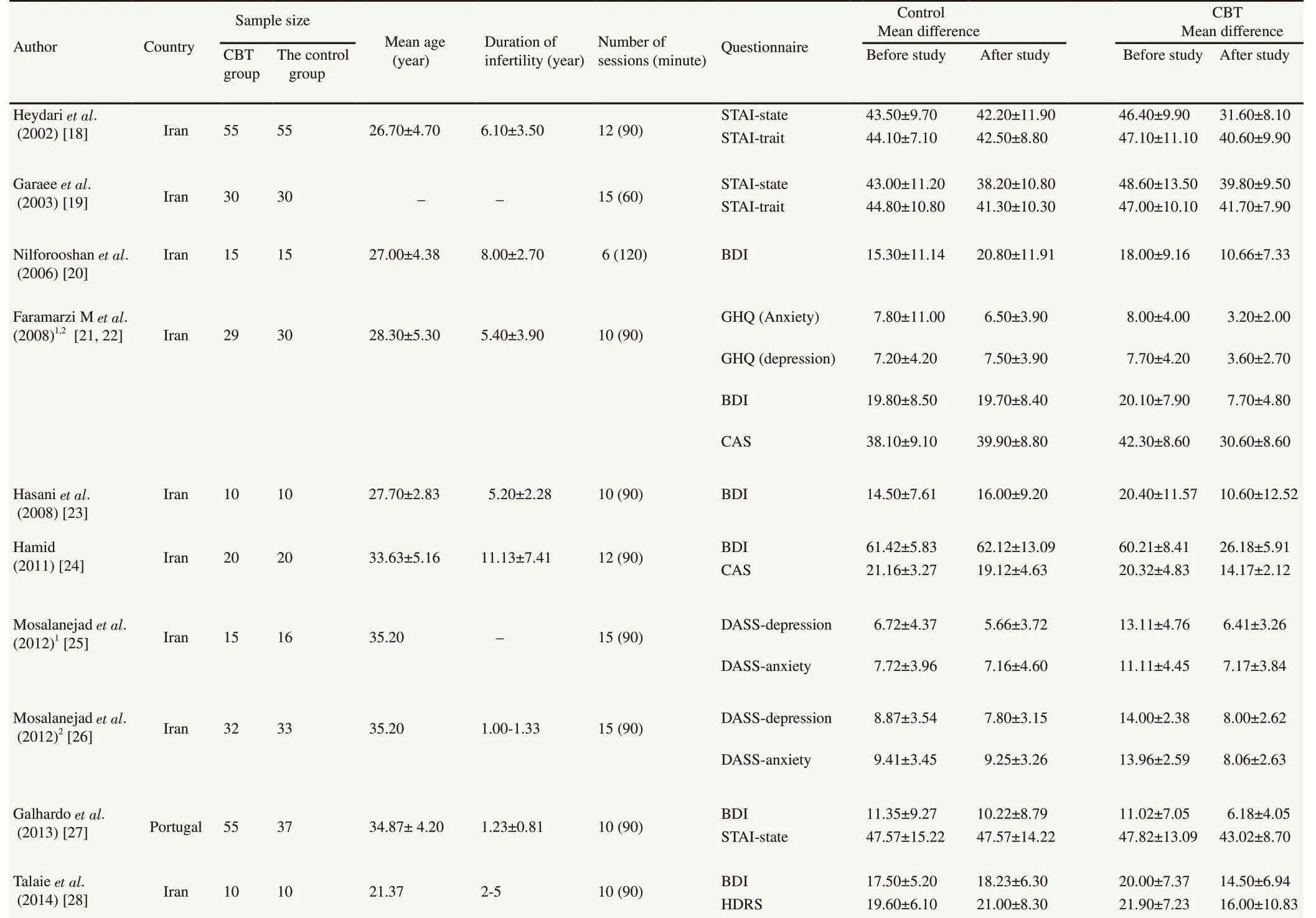
Table 1. Basic characteristics of included studies and mean scores of depression and anxiety.

Figure 2. Difference between the cognitive-behavioral treatment group and the control group in risk ratio for depression.1,2 = different studies related to one author; a,b = different quetionnaires were used in one study. Std diff in means: Standard difference in means; CI: Confidential interval.
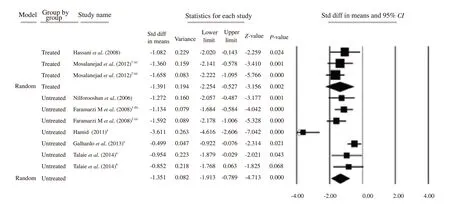
Figure 3. Difference between the cognitive-behavioral treatment group and the control group in risk ratio for depression in IVF/ICSI-treated group and not IVF/ICSI-treated group. IVF: in vitro fertilization; ICSI: intracytoplasmic sperm injection. 1,2 = different studies related to one author; a,b = different quetionnaires were used in one study; Std diff: Standard difference in means; CI: Confidential interval.
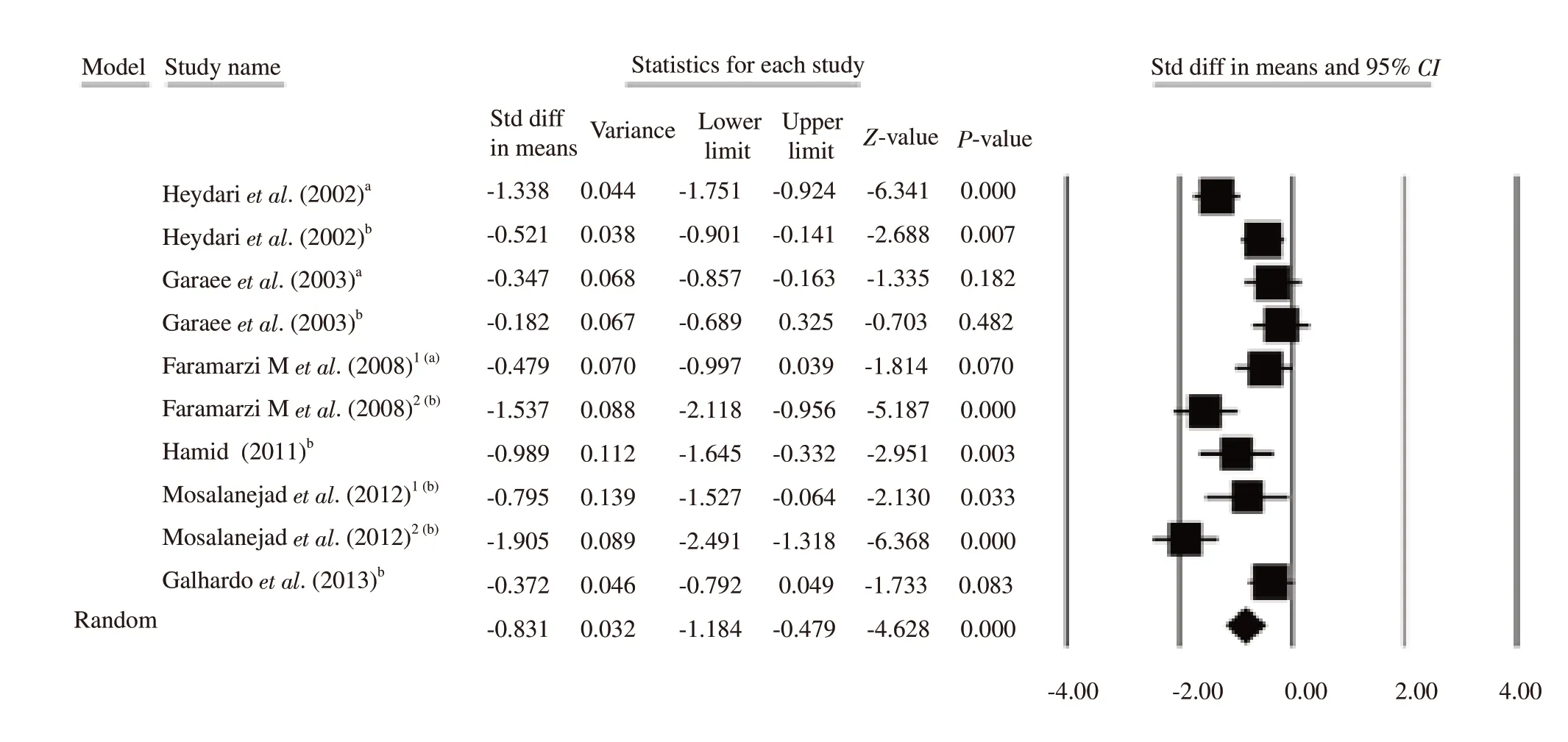
Figure 4. Difference between the cognitive-behavioral treatment group and the control group in risk ratio for anxiety. 1,2 = different studies related to one author; a,b = different quetionnaires were used in one study. Std diff in means: Standard difference in means; CI: Confidential interval.

Figure 5. Difference between the cognitive-behavioral treatment group and the control group in risk ratio for anxiety in IVF/ICSI-treated group and not IVF/ICSI-treated group. IVF: in vitro fertilization; ICSI: intracytoplasmic sperm injection. 1,2 = different studies related to one author; a,b = different quetionnaires were used in one study. Std diff in means: Standard difference in means; CI: Confidential interval.
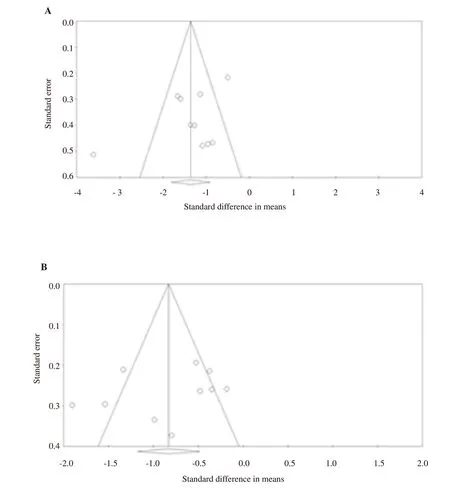
Figure 6. Funnel plot to evaluate possibility of publication bias. A: depression; B: anxiety. The number of circles is related to the different questionnaires used in 11 studies. At all, 20 questionnaires were analysed. Std diff in means: Standard difference in means.
4. Discussion
Infertility has mental and social as well as reproductive consequences. Assessing the effectiveness of CBT on anxiety and depression of infertile women has been investigated in 11 randomized clinical trials or quasi-experimental studies. These studies comprised 527 infertile women. Of the included studies,10 were conducted in Iran and one in Portugal. The quality assessment suggested that the overall study quality was fair and no significant publication bias was detected. Despite the subgroup analysis for applying assisted reproductive technology, studies have heterogeneity. Using different questionnaires in different studies caused a heterogeneity which was significant in the case of anxiety.Subgroup analysis was not possible in the case of questionnaires because of the low number of studies. Overall, the results of the included studies do support the use of CBT in the treatment of infertile women’s depression and anxiety. In contrast to the results of this study, Hammerli et al[29] in a meta-analysis study showed that psychological interventions for infertile patients had no effect on mental health. For justifying this discrepancy, we could mention that in the study of Hammerli et al, different types of psychological interventions were applied in both men and women by using a wide variety of assessment tools. Also, the results of a systematic review showed no effect of different psychological treatments on infertile couples’ stress and depression; however, these type of treatments had a positive effect on reducing anxiety[16]. Based on the recommendation of the above studies, future research should be focused on the specific target population and specific psychological interventions. It should be considered that men and women are differentially responded to psychological treatments[20]. One reason for these different responses is that women experience higher levels of mental distress than men[30,31]. Regarding the higher levels of mental distress in infertile women, two explanations have been discussed. One is that women must bear the main burden of medical treatment for infertility and their desire for a child is more important to their life’s plan[32,33]. The other is that infertile women feel higher blame for infertility and have a major role in the beginning and following the treatments[34], they have greater emotional investment than men[35] and they spend more time to do the practice. Therefore,it seems that women are more dynamic and responsive in using psychological programs.
The results of some other studies in infertile women supported our finding, which showed that CBT and receiving daily information and support could lower the anxiety and depression scores of infertile women than controls[10,36]. As infertile women experience prolonged, procedural and profound process, cognitive-therapeutic methods are considered as one of the best options due to their direct focus on thoughts and conscious imaginations of individuals. CBT avoids ‘waiting stress’ so it could be valuable for infertile couples to manage their stress[10,37]. This effect occurs through muscle relaxation and respiratory rate reduction, which results in better controlling of the muscle tension, decreasing oxygen expenditure and carbon dioxide excretion, diminishing heart rate and blood pressure, reducing energy expenditure and at last reducing anxiety and mental stress. These physiological changes result from the reduction of sympathetic nervous system activity[38].
In addition, the mental health of infertile women could be recovered by CBT through the causal cognition model. Depraved outlooks and negative vision are involved in the depression onset and maintenance.Primarily, the negative automatic view would be recovered by a cognitive intervention that mediates depressive signs, and then negative approaches would be replaced with more adaptive ones[39].
It seems that group interventions were significantly more effective than individual counseling interventions[11]. Infertile women feel lonely and suppose that their problem is unique so they cannot communicate their feelings and problems. As a result, it seems that groups supply the safest situation to talk about the unexpressed feelings and consequently psychological discharge[38] as well as for distributing their experiences[40].
The present meta-analysis also found that CBT is effective in the reduction of depression and anxiety in patients with or without IVF/ICSI treatment. This result may be confounded by the duration of infertility and interventions. Women in both groups at different stages of their medical were handling with a variety of indications regarding the medical procedure, which can be confounders. Based on the results of this study and considering the limitations, it seems that setting up counseling centers inside the gynecological clinics would help infertile women to reduce psychological distress and increase rate of successful treatment.
Low risk of subjective data selection was the advantage of our systematic review. Predefined criteria were used for searching databases, screening and assessing articles. Nevertheless, this study had some limitations. First, this study is not registered in PROSPERO. Also, our analysis had some limitations as follows:negative findings are less likely to be published so publication bias cannot be excluded. In addition, systematic reviews are only as good as the included studies. In this review, only some of the included random controlled trials seemed methodologically sound. Unclear or inadequate allocation concealment, inadequate information about controlling confounders, and applying different questionnaires for evaluating depression and anxiety were the most important problems. Also, most of the studies were conducted in one country which could distort the results.
Based on the relationship between depression and infertility and the effect of counseling based on the CBT approach on the treatment of depression and anxiety, using counseling approaches are recommended. It is suggested that the counseling centers should be set up inside the medical center so that these programs can be applied to help infertile couples with psychiatric problems to promote mental health. Further high-quality investigations on the effect of CBT approach on infertile couples at different stages of their medical handling, different infertility problems and modalities are needed.
Conflict of interest statement
None of the authors had a conflict of interest with respect to this manuscript.
Acknowledgments
We would like to appreciate the editors and referees for considering our study and thanks for absolutes support of Research Development and Cooperation Centre and Iranian Centre for Evidence-Based Medicine, Tabriz University of Medical Sciences.
杂志排行
Asian Pacific Journal of Reproduction的其它文章
- Prolonged post-thaw culture of embryos does not improve outcomes of frozen human embryo transfer cycles: A prospective randomized study
- Protective effect of Citrus reticulata peel extract against potassium dichromateinduced reproductive toxicity in rats
- Effects of Crassocephalum bauchiense (Hutch) leaf aqueous extract on toxicity indicators and reproductive characteristics in Oryctolagus cuniculus exposed to potassium dichromate
- Stable state of serum inflammatory cytokines during induction of benign prostate hyperplasia in dogs
- Effect of L-carnitine supplementation during in vitro maturation and in vitro culture on oocyte quality and embryonic development rate of bovines
- Human blastomere rotation in early cleavage embryos is not associated with reduced implantation: Evidence from time-lapse videography
